Around Brera and La Scala
Pinacoteca di Brera
The Brera Gallery in Milan is located in the homonymous palace built in the 14th century as a place for the monastery. The building was operated by the Jesuits as a seminary until the dissolution of the Order, when it became the property of the State of Austria, Maria Theresa empire on which it turned into an art school.
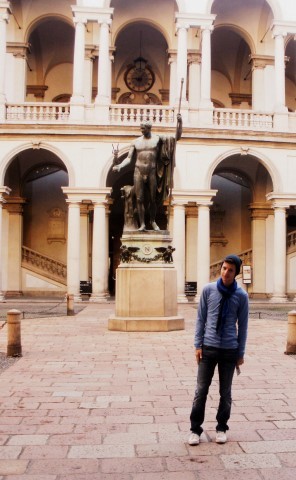
Initially a gallery, it was open for the public in the times of Napoleon and thereafter it began to gather works of Renaissance and medieval art. The gallery features some of the greatest masterpieces of Italian art from the 16th to the 20th century, such as the 'Marriage of the Virgin' by Raphael.


After enjoying the beauty of the art in the gallery, do not miss the opportunity to explore one of the most beautiful neighborhoods and atmospheres in Milan. The gallery is located in the eponymous neighborhood, Brera, which has many picturesque streets with cute shops, restaurants and cafes.
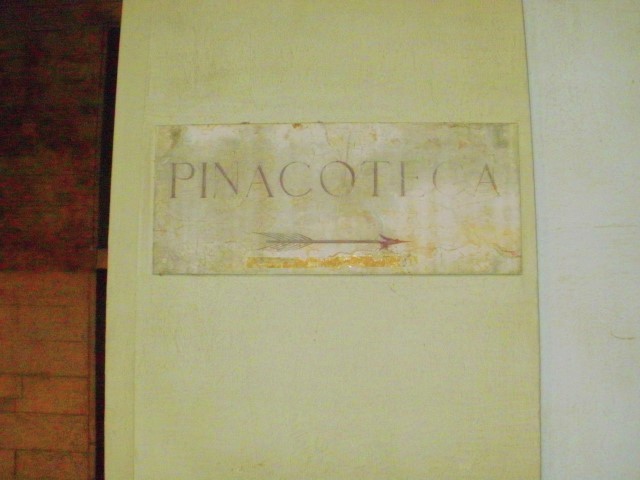
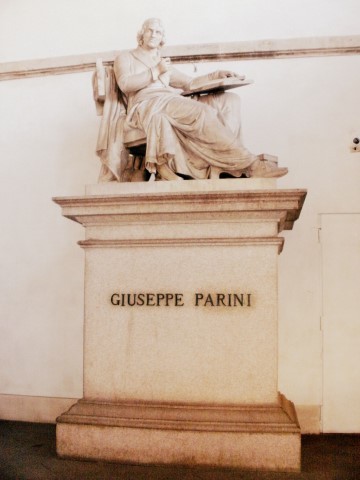
Access: From the metro stop Montenapoleone (yellow line 3) and then you need to walk on the northwest Via Borgonuovo for 300 meters and turn left into Via Fiori Oscuri and then right in Via Brera.

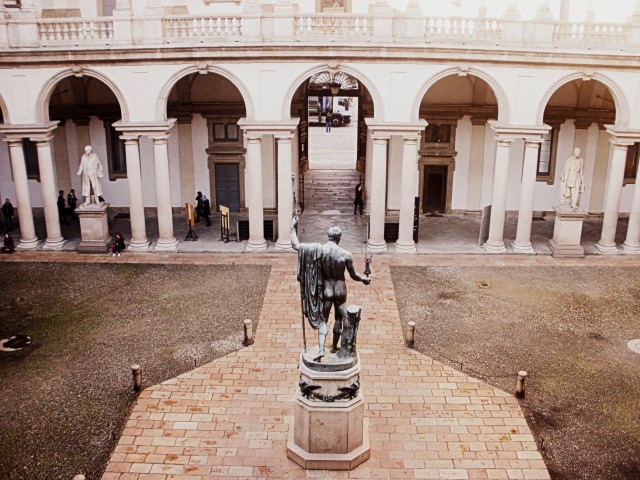
LA SCALA DI MILANO
La Scala is one of the most famous opera houses in the world. It is located in the square Piazza della scala downtown. The building is relatively simple on the outside, but the inside is gorgeous! A huge hall waiting before performances, decorated with chandeliers, polished floors, a piano and busts of famous composers.

The theater auditorium is truly spectacular! Red, gold and velvet dominate in the interior of this famous building. It has a circular shape, so that all spectators have a good view of the stage. Also, the theatre hosts opera, ballet and classical music concerts. For most of the performances pre-sale for tickets is completed several months in advance!

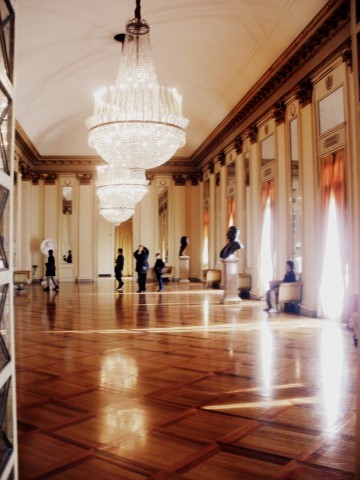
The opening of the theater took place in 1778 with the first performance of the opera "L'Europa riconosciuta" by Antonio Salieri. The building was bombed during World War II and the roof collapsed. The theater was restored and reopened in 1946, and the most recent renovation was in 2004.
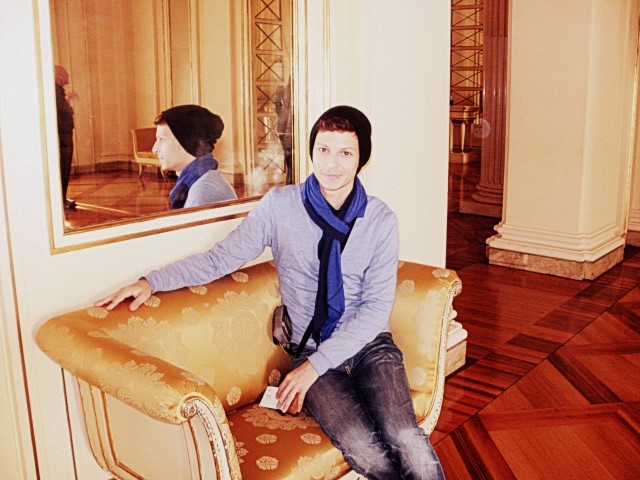
Tips
- Keep in mind that the museum is closed for one hour at noon (12:30-13:30)
- You can not see the main hall of the theater if at that time a rehearsal is taking place
Photo gallery
Content available in other languages
- Polski: Wokół Brera i La Scala
- Español: En Brera y La Scala
Scala Square
Finding yourself downtown in Milan, you do not know how to split your attention! What to visit first? After you visit the Duomo, Duomo Square and the Vittorio Emanuele Gallery, the galleries, and out in front (in the sense of coming from the Dom) hitting the market scale. Built 1960, market Scale, is a pedestrian square, where the master is Leonardo da Vinci with his students (work of sculptor Pietro Magni in 1872) and the pigeons. In the square, on the left side there is Teatro alla Scala Milan, Opera houses and Museum scale. Scala Museum presents the public documents about the history of the theatre, costumes, paintings, objects and statues. Vis-à-vis the Palace Opera Marino (the oldest building in the market, the work of Galeazzo Alessi-1563) and the Italian Commercial Bank Building (the North-East).
On SW market lies v. Emanuele Gallery and Palace Beltrami. Beltrami is the architect of his own Palace, of B or c. i. and façade of Palazzo Marino. La Scala Opera House, the famous opera house in the world, was built on the location of a church "Santa Maria della Scala" from whence comes the name. The Opera House's architect Giuseppe Piermarini. Here the first performance was held in the year 1778. In the center of the square is found Italian art museum dedicated to the centuries of the 19th century and the 12th century with the works of artists mainly Lombards: Antonio Canova Umberto Boccioni, Giovanni Boldini, Giovanni Boldini, Gaetano Previati, Gaetano Previati, Alberto Burri, Lucio Fontana, Emilio Vedova.
Teatro Alla Scala
The theater and took its name from the Church on the location which is located, Santa Maria della Scala. The construction of the theatre was developed over a period of two years, 1776-1778, after the plans of architect Giuseppe Piermarini Foligno, in command of the Empress of Austria, Maria Theresa. The theatre was the first hosted the performances of Bellini's Norma, with Otello and Falstaff by Verdi, La Gioconda by Ponchielli, Mefistofele Boito and Puccini's Turandot. Have had success at the scale of Domenico Cimarosa, Giovanni Paisiello, Nicola Antonio Zingarelli, Luigi Cherubini, Ferdinand Johann Simon Mayr, Paër, Gioachino Rossini, Giacomo Meyerbeer. In 1839, Giuseppe Verdi-made its debut at la Scala with Oberto, Conte di San Bonifacio. After the liberation of Italy by Austrians (1859), La Scala theater work was resumed by Lucia di Lammermoor. Since 1883, the scale is illuminated electrically.
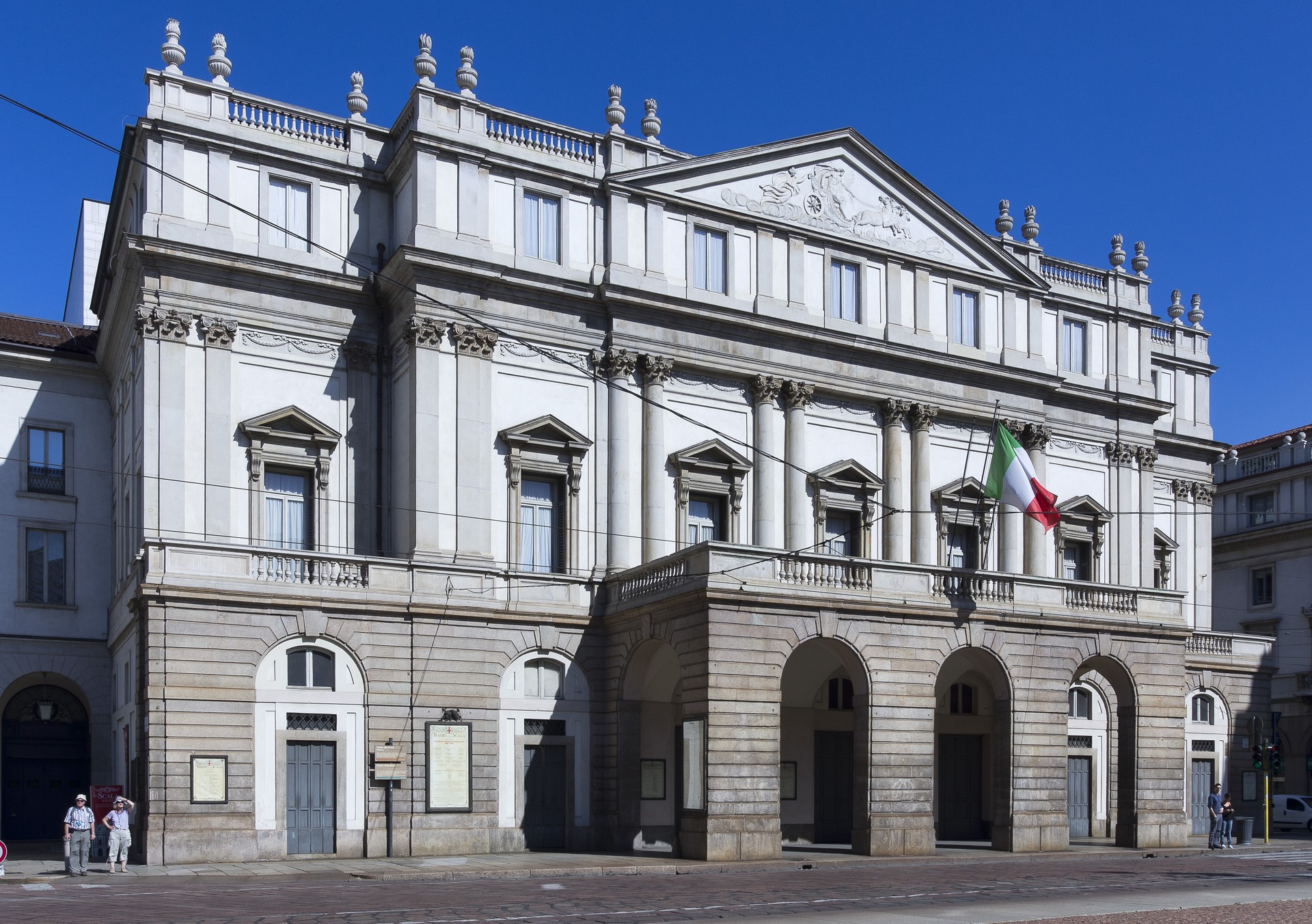
Between 1894-1897 in Scala have mounted works of French composers: Charles Gounod, Daniel Auber, Fromental Halevy, Hector Berlioz, Georges Bizet, Jules Massenet, Camille Saint-Saëns and Realistic Italian School: Pietro Mascagni, Ruggero Leoncavallo, Umberto Giordano. A real suscces had Wagner's works, which inaugurau the season of opera in those years. In 1898, the artistic direction of the Arturo Toscanini's lies. They captured the scene Scale, Mascagni, Franchetti, Boito. They shined Theatre singers, directors, conductors and renowned designers. After the war, in 1948 and Renata Thebaldi Maria Callas were galvanising la Scala audiences, creating a real magic. Throughout the time of the drama underwent renovations and expansions and modernizations. successive. The last renovation of the theatre was in 2002 and lasted until 2004. The Theatre today has 2, 800 seats, four rows of berths and two galleries.
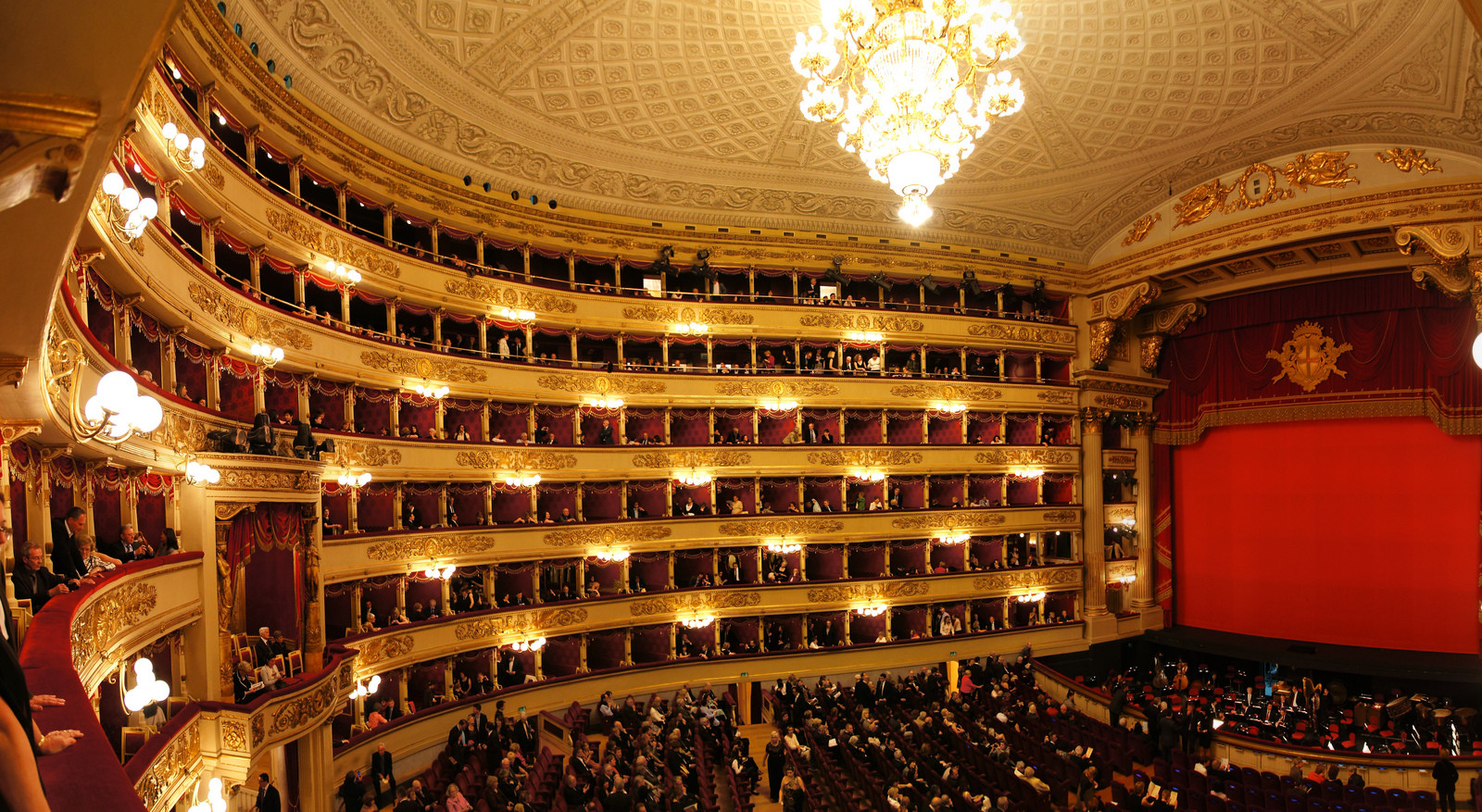
The monument to Leonardo da Vinci and his disciples In his life, Leonardo da Vinci (1542-1519), multi-purpose genius who has embodied the ideals of the Renaissance, had two periods to stay in Milan: 1482-1499-1511 si1506. It is well known that da Vinci was born in Florence and lived in several cities of Italy. In his honor, in La Scala in Milan, the Market was a monument erected in 1872, sculptor Pietro Magni. Rarisim genius, Leonardo da Vinci, is presented on a pedestal at the foot of which strajuiesc four of the students favorite artist, whereby the sculptor describes four of the areas in which Leonardo da Vinci excelled: engineering, architecture, painting, sculpture.
Leonardo da Vinci in Milan had a workshop, where the artist has gathered beside him disciples and students as: Francesco Napoletano, Andrea Solari, Marco d ' Oggiono, Andrea Giovanni Antonio Boltraffio Salai, Ambrogio de Predis, Bernardino de ' Conti. After the death of Leonardo da Vinci's Sforza Milan leaves. Charles d'amboise will ask his Leonardo ds Vinci to return to Milan in the year 1506. The artist will advise in matters of architecture and hydrotechnics (Kc Canal, which connects Milan to Lake Como). In the workshop of Master students we appear as Cesare da Sesto, Bernardino Luini, Giampetrino and Ron Noble Francesco Melzi. During this period the artist paints small, abandons another sculptural project (equestrian statue of Sforza had the same treatment)
San Babila square located in the center of the complement, Milan, Duomo neighborhood, San Babila Square, is located between Corso Vittorio Emanuele and Piazza Duomo, and was for long the meeting place for the good of Milan world architecture of the buildings in this area had the gloomy colors up to the construction of this market, the location being fieful potentatilor weather during the fascist years seventy-from the last century. Construction market resulted in the opening of Corso Vittorio Emanuele and face the ancient basilica San Babila, even if it has shrunk a bit from this end Corso Venezia. The market has a rectangular shape, is guarded on the long side of the Banca Popolare di Milano (built by Giovanni Greppi in 1931), while on the opposite side there is a long arcade building (Emilio Lancia, 1931), which ends with the SNIA Tower, a skyscraper in Milan, in Piazza San Babila in Milan's historic centre. the Tower has a height of 60 meters.
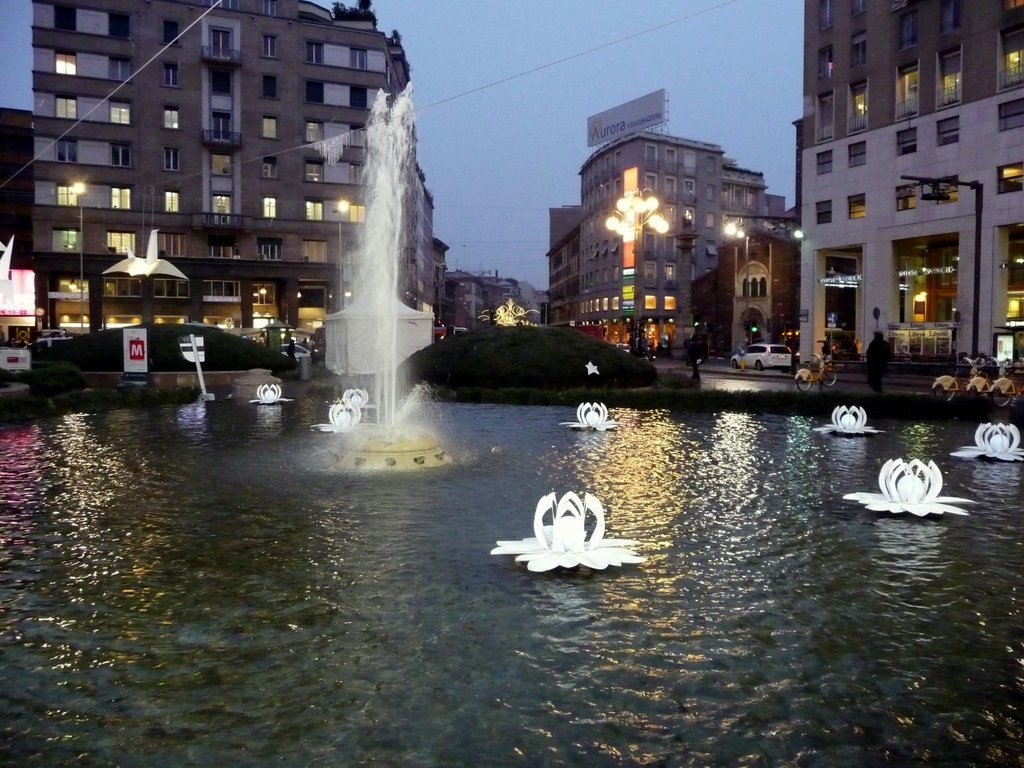
Big fountain in the middle of the square is quite recent, and is donated to the town by Fiera Milano in 1997. The north side of the square with the Palace and the garage dell ' UPIM (cross-arms garage), both by Giuseppe De Min, was completed in 1938. Today the market is very crowded and is a favorite spot for young people, who are sitting and basking on the rim of the fountain-looking backward on Tulip petals whose water flows as a film.
Photo gallery
Content available in other languages
- Italiano: Piazza della Scala
- Español: Scala Square
Rate and comment about this place!
Do you know Pinacoteca Di Brera || Scala? Share your opinion about this place.





























